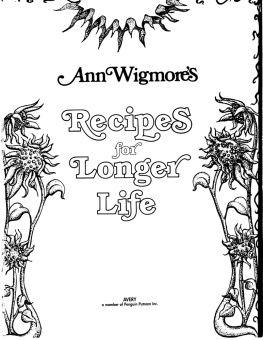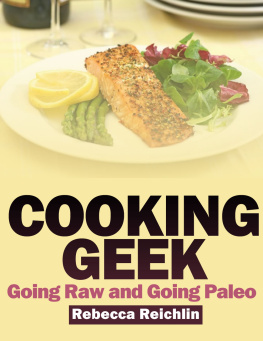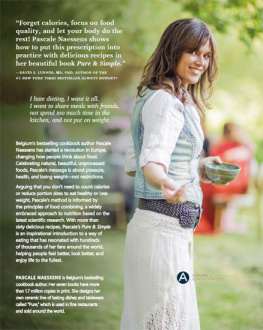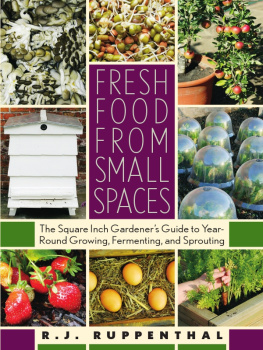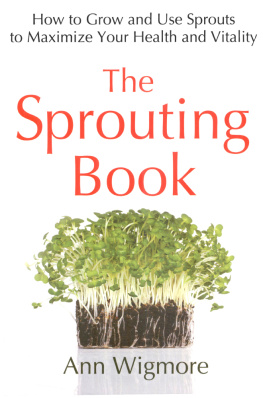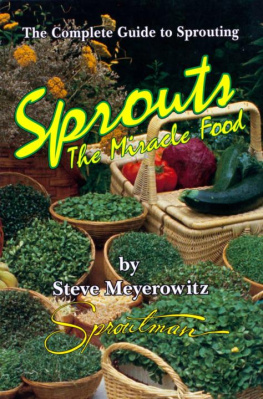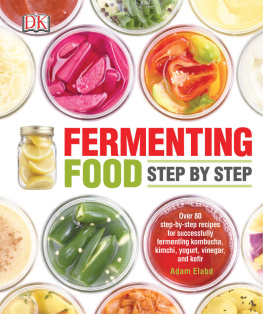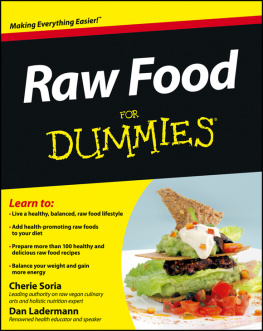Wigmores - Ann Wigmores recipes for longer life
Here you can read online Wigmores - Ann Wigmores recipes for longer life full text of the book (entire story) in english for free. Download pdf and epub, get meaning, cover and reviews about this ebook. City: Wayne;NJ, year: 1980;1982, publisher: Penguin Publishing Group;Avery Pub. Group, genre: Children. Description of the work, (preface) as well as reviews are available. Best literature library LitArk.com created for fans of good reading and offers a wide selection of genres:
Romance novel
Science fiction
Adventure
Detective
Science
History
Home and family
Prose
Art
Politics
Computer
Non-fiction
Religion
Business
Children
Humor
Choose a favorite category and find really read worthwhile books. Enjoy immersion in the world of imagination, feel the emotions of the characters or learn something new for yourself, make an fascinating discovery.
Ann Wigmores recipes for longer life: summary, description and annotation
We offer to read an annotation, description, summary or preface (depends on what the author of the book "Ann Wigmores recipes for longer life" wrote himself). If you haven't found the necessary information about the book — write in the comments, we will try to find it.
Ann Wigmores recipes for longer life — read online for free the complete book (whole text) full work
Below is the text of the book, divided by pages. System saving the place of the last page read, allows you to conveniently read the book "Ann Wigmores recipes for longer life" online for free, without having to search again every time where you left off. Put a bookmark, and you can go to the page where you finished reading at any time.
Font size:
Interval:
Bookmark:


It is a sign of wisdom, not cowardice, to seek a second or third opinion. Copyright 1978 by Ann Wigmore and Hippocrates Health Institute ISBN 978-1-101-66261-8 All rights reserved. No part of this publication may be reproduced, stored in a retrieval system, or transmitted, in any form or by any means, electronic, mechanical, photocopying, recording, or otherwise, without the prior written permission of the copyright owner. A DIFFERENT APPROACH TO THE VITAMIN QUESTION There has been more research work done on vitamins than any other component of food, and yet the basic facts of vitamins are almost lost upon both researchers and laymen. It is necessary to recognize living forces as separate and apart from materialistic concepts. It is impossible to analyze or separate out vitamins.
The vitamins are something immaterial a living force. Foods rich in vitamins, such as wheat grass or carrots, take on the living forces so that the living forces are integral with the wheat grass and carrots but cannot be separated from them. The living forces may be lost but cannot be separated out. What is the main source of this living force? The main source is the sun. We think of the suns rays as light rays, but in reality many different types of rays come into the world from the sun, and these are not all visible to us. The infrared rays and ultraviolet rays are examples.
Foods rich in vitamin A, such as oils and seeds, are those which are rich in warmth. Warmth derives from the sun mostly from the infrared rays of the sun. Foods rich in vitamin B are those rich in order such as the husks of wheat berries or rice and the peels of fruit. Order derives from the ultraviolet rays of the sun. Foods rich in vitamin C are those rich in light such as green leaves (wheat grass). Light derives from the visible rays of the sun.
Vitamin D is in another category. The best way to describe vitamin D is to relate an experiment with pigeons which had the oil glands under their tails removed. They developed rickets, the prime vitamin D deficiency disease. When preening their feathers, the pigeons could no longer oil their feathers to allow the sun to irradiate the oil into vitamin D, with resultant absorption of the irradiated oil into the birds skins. Undoubtedly our best vitamin D is the vitamin D we ourselves can properly absorb through our skin from the rays of the sun. My personal belief and practice is to expose a reasonable amount of my skin to the sun whenever conveniently possible.
Paradoxically, the warmth, light, and air which impart the living forces to growing foods will destroy them after they have been harvested. Take hay, for example, which is livestocks chief sources of complete vitamins. A farmer will store his hay, protecting it as much as possible from light, heat, and moving air current. Years ago there were dairies which bottled milk in amber-colored bottles to protect the milk from light. The milk was to be kept refrigerated and sealed except when poured for use. The same principles apply to all living food, once harvested.
The food should be protected as much as possible from warmth, light, and air. Harvey C. Lisle A WORD FROM HARVEY G. LISLE TECHNICAL ADVISOR TO ANN WIGMORE I graduated in 1937 from Ohio State University, where I had majored in chemistry. After getting out of the U.S. Air Force, I worked as a chemist for an agricultural laboratory (the Brookside Laboratory) where I tested soils and animal fodder, and subsequently I worked as a food technologist.
At the same time, I took up my avocation of testing food for human consumption. My chief diagnostic tool for testing foodstuffs is paper chromotography. Paper chromatograms are mediums for telling whether or not a food has been raised organically/naturally; whether it is full of life forces or devoid of such forces. While this testing method gives only basic answers, these are basic answers essential to a grass roots movement of people interested in a more natural lifestyle. Ann Wigmore, with her lay organization, the Hippocrates Health Institute, is a prime example of a person needing help ordinarily unavailable from any professional source. I agreed to help her in those areas where I felt qualified.
Such help has always been rendered out of love for humanity and not out of love for remuneration. One of the keys to Ann Wigmores program is the raising of wheatgrass and the consumption of wheatgrass chlorophyll. The growing of wheatgrass is relatively simple and can be carried out by anyone who desires to do so, regardless of whether at Ann Wigmores Mansion, at home, in a desert region, or even on travels. Although raising wheatgrass is simple, there are a few fundamental rules which must be followed if the grass is to be of value. With the help of my experience and testing methods, we were able to devise with Dr. Ann what we think is the optimum method for raising the kind of wheatgrass which incorporates the highest grade of chlorophyll, vitamins, minerals, and enzymes.
The next step was to determine whether the fresh wheatgrass juice should be drunk immediately or whether it could be made in advance and then stored in the refrigerator for a few hours or any other length of time. Although we had a good idea of what the answer would be, it took a little research to arrive at a fairly definite time span. The answer was as follows: for the maximum benefit, the freshly-extracted juice must be consumed within fifteen minutes of its preparation. Research done by other scientists on a variety of juices (including wheatgrass juice) shows that a median time lapse of only seven minutes is recommended for full benefits. We are all, therefore, in full agreement that a freshly-extracted juice of fresh living produce must be drunk almost immediately. Ann Wigmore asked me to formulate a salad that would be complete in food values, including proteins.
This research involved not laboratory facilities, but books and tables which gave such diverse information as amino acid values, calories, percentage of fat or carbohydrates, life energy (resistance), etc. Such a salad was formulated with the provision that if a person was still hungry or had a craving after eating, that person was allowed to satisfy his/her appetite by supplementation with other vegetarian food. There were a number of what I would call minor problems which Dr. Ann asked me to address. For example, almost everyone likes watermelons, but almost no one eats the white meat of the inner rind which borders the red fruit. Analysis proved the white portion to be very rich in nutrients.
Tests on family and friends confirmed that the white meat is very easily digestible so the conclusion is obvious. The taste of the white meat is not objectionable; the only consideration is that this portion is harder to chew than the inner red fruit. Therefore, for the sake of health and the strengthening of much-needed will power, go ahead and eat it for all-around benefit. As is widely known today, the minerals and vitamins, as well as the enzymes, of all fruits and vegetables are located predominantly in rinds and skins and immediately underneath them. Another major key to Dr. Ann Wigmores Health Program is enzyme-rich fermented foods: seed sauces and cheeses and a drink called Rejuvelac.
Font size:
Interval:
Bookmark:
Similar books «Ann Wigmores recipes for longer life»
Look at similar books to Ann Wigmores recipes for longer life. We have selected literature similar in name and meaning in the hope of providing readers with more options to find new, interesting, not yet read works.
Discussion, reviews of the book Ann Wigmores recipes for longer life and just readers' own opinions. Leave your comments, write what you think about the work, its meaning or the main characters. Specify what exactly you liked and what you didn't like, and why you think so.

